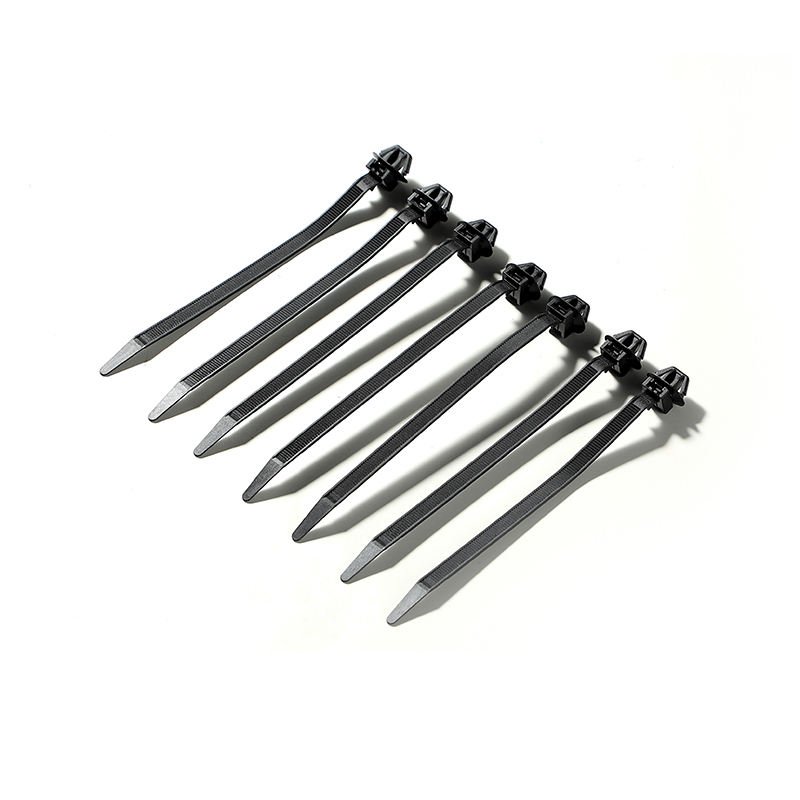 2025.07.11
2025.07.11
 News
News
Cable ties are an essential component in a wide range of industries, from electrical to automotive and even household uses. These simple yet effective tools help organize and secure cables, wires, and other items, keeping them neat and in place. One of the common types of cable ties is the PP seal cable tie, which is made from polypropylene (PP) and designed to provide a secure, tamper-proof closure. The PP seal cable tie mold used to manufacture these cable ties plays a crucial role in determining their dimensions, strength, and overall performance.

The molding process involves injecting molten PP plastic into the mold, where it is cooled and solidified to create the final product. The accuracy and precision of the mold dimensions directly influence the quality of the finished cable tie. Therefore, understanding the key dimensions and features of the mold is crucial for manufacturers aiming to produce high-quality cable ties.
The dimensions of a PP seal cable tie mold are typically influenced by the following factors: the size of the cable tie, the design of the locking mechanism, and the type of PP material used. Below are the key dimensional considerations when designing or selecting a PP seal cable tie mold.
The length of the cable tie is a critical factor in its functionality and is one of the primary dimensions considered in the mold design. Cable ties are available in various lengths, typically ranging from 4 inches (100 mm) to 36 inches (900 mm) or longer. The mold must be designed to accommodate the desired length, with precise control over the shaping process to ensure consistency across production.
Common lengths: Cable ties commonly come in lengths of 4, 6, 8, 10, and 12 inches, but customized sizes are also available.
Mold considerations: The mold's cavity must be able to form the tie's full length without any deformation or inconsistencies.
The width of the cable tie is another essential dimension that varies based on the intended use of the cable tie. Wider cable ties can accommodate larger bundles of cables or other items, while narrower ties are ideal for smaller applications. The width is usually determined by the application requirements and is also influenced by the strength and material properties of the polypropylene.
Typical widths: Standard cable tie widths are usually in the range of 2.5 mm to 7.5 mm, with the common being around 4.8 mm (3/16 inch).
Mold considerations: The width of the mold's cavity must be accurately crafted to create ties with the correct width, ensuring the tie can hold the required load without breaking or deforming.
The thickness of the cable tie body and head determines the tie's strength, flexibility, and durability. Thicker cable ties provide higher tensile strength and are capable of securing heavier loads, while thinner ties are often used for lighter-duty applications.
Standard thickness: Cable tie thickness typically ranges from 0.15 mm to 0.30 mm, depending on the material used and the tie's intended purpose.
Mold considerations: The mold must ensure that the thickness is consistent along the length of the cable tie, preventing weak points or uneven surfaces.
One of the critical components of a PP seal cable tie is the locking mechanism or "seal," which ensures that the tie remains securely fastened once tightened. The seal is designed to be tamper-proof, preventing the tie from being undone without cutting it. The design of the locking mechanism is closely tied to the dimensions of the mold.
Locking design: The locking mechanism consists of a small ratchet and a pawl that prevents the tie from loosening once tightened. This part of the mold must be designed with high precision to ensure a reliable locking mechanism.
Mold considerations: The mold cavity for the locking head must be designed with the right dimensions and features to ensure that the ratchet engages smoothly and securely when the tie is used.